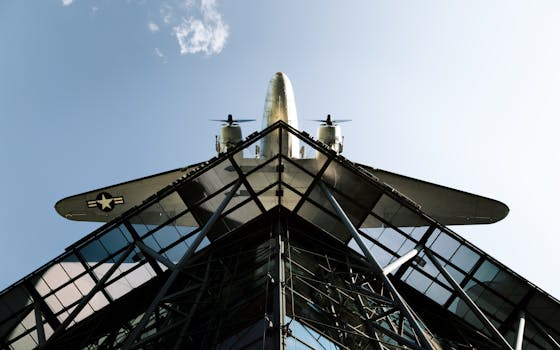
The Future of Luxury Jet Airplanes: Innovations and Trends to Watch
Takeaways: Luxury jet airplanes are evolving rapidly with a focus on sustainability, enhanced passenger experience, and advanced technologies. Key trends include the rise of sustainable aviation fuels, innovative cabin designs, and the integration of smart technologies. As the private aviation market grows, these advancements promise to redefine luxury travel.
The world of luxury jet airplanes is on the brink of a major transformation. As technological advancements and environmental concerns shape the aviation industry, luxury jets are set to become more efficient, sustainable, and comfortable than ever before. In this article, we will explore the latest news and trends surrounding luxury jet airplanes, including innovations in design, technology, and sustainability.
Emerging Technologies in Luxury Aviation

For instance, the use of artificial intelligence (AI) is becoming more prevalent in the cockpit. AI can assist pilots with flight planning, navigation, and even real-time decision-making during flights. This not only improves safety but also optimizes fuel consumption and reduces operational costs.
Another significant technological advancement is the development of fly-by-wire systems, which replace traditional mechanical controls with electronic interfaces. These systems provide pilots with greater precision and control while also allowing for automation of certain flight operations, thus enhancing the overall flying experience.
Moreover, luxury jet manufacturers are increasingly focusing on smart cabin technologies. These innovations allow passengers to control various aspects of their environment, such as lighting, temperature, and entertainment systems, through their personal devices or smart interfaces located throughout the cabin.
Sustainability Takes Center Stage
As climate change becomes an urgent global issue, the aviation industry is under pressure to reduce its carbon footprint. Luxury jet manufacturers are responding by investing in sustainable aviation fuels (SAFs) and exploring hybrid and fully electric propulsion systems.
SAFs are derived from renewable resources and can significantly reduce greenhouse gas emissions compared to traditional jet fuels. Several luxury jet companies are already testing these fuels, paving the way for a more sustainable future in private aviation.
Furthermore, advancements in battery technology are making electric and hybrid jets more viable. Companies like Ampaire and Joby Aviation are leading the charge in developing electric aircraft that promise to revolutionize short-distance travel while minimizing environmental impact.
In addition to fuel innovations, luxury jet designs are also evolving to enhance aerodynamics and fuel efficiency. Manufacturers are experimenting with new materials and shapes that reduce drag and improve performance, contributing to a greener aviation sector.
The Evolving Luxury Experience
Luxury in private aviation is not just about the aircraft itself; it’s also about the experience onboard. The future of luxury jets promises a more personalized and comfortable travel experience.
Leading manufacturers are reimagining cabin designs to create serene and luxurious environments. This includes the use of high-end materials, customizable layouts, and innovative lighting solutions to enhance mood and comfort during flights.
Moreover, the integration of wellness features is becoming increasingly popular. Many new jets are being designed with air purification systems, adjustable lighting that mimics natural light cycles, and even in-flight wellness programs that include yoga and meditation.
In-flight connectivity is also improving dramatically. With the advent of 5G technology and satellite internet, passengers can enjoy seamless connectivity, allowing them to work or stay entertained throughout their journey.
Market Trends and Future Outlook

According to industry reports, the global private jet market is projected to reach USD 30 billion by 2030, driven by demand for both new and pre-owned jets. This growth is prompting manufacturers to invest in research and development to meet the evolving needs of their clients.
As the industry adapts to new challenges and opportunities, luxury jet manufacturers must remain agile and innovative. The trends of sustainability, advanced technology, and enhanced passenger experiences are not just passing fads; they are the future of luxury aviation.






